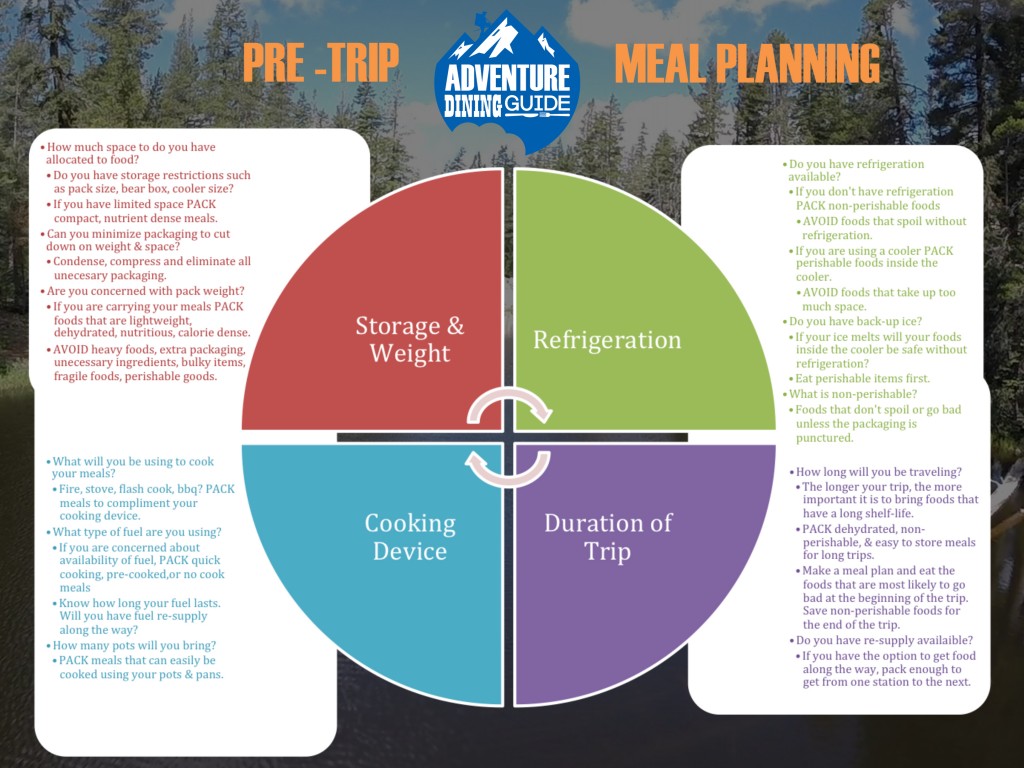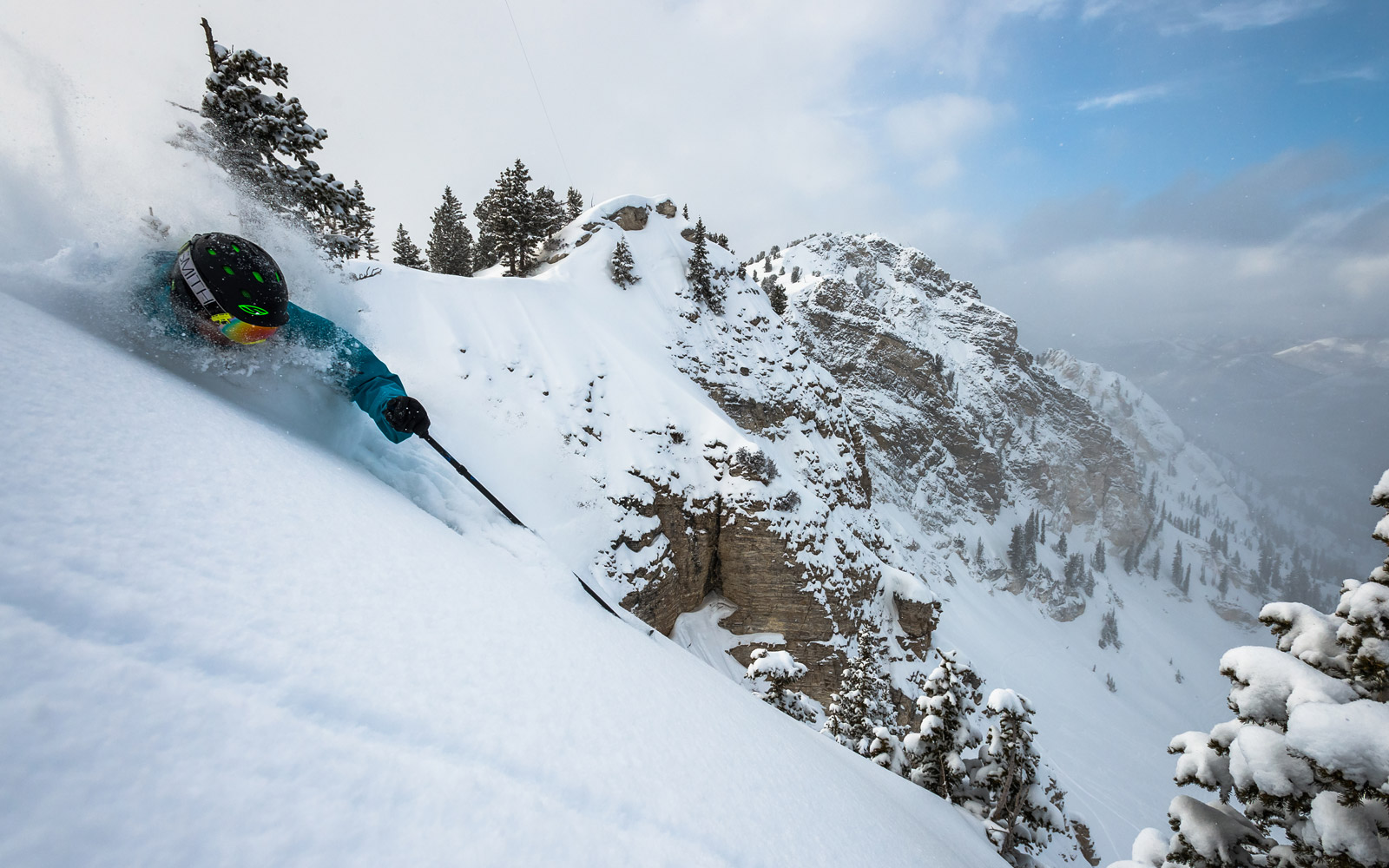Easy Backcountry Meal Planning
Packing food for an outdoor excursion can be a daunting task. Often times meal planning becomes a last minute thought, and people simply “grab something” and hit the road. Instead of feeling overwhelmed with what to eat for the duration of your trip, try following these 4 steps to find the right foods to fit your journey.
HOW TO PACK FOOD FOR A TRIP
Narrow down your food options by focusing on these four critical details: storage/weight, refrigeration, duration of trip, and cooking device. By asking yourself what resources you have available, you will get a better understanding of the right type of foods to pack.

The above chart organizes the four meal planning factors that will have the biggest influence on the types of foods to pack for an adventure.
For example, if you have limited storage space, weight concerns, no refrigeration, cooking with a JetBoil, and your trip lasts for 3 days; you will need lightweight, caloric dense, one pot meals with non-perishable foods. As another example, if you have endless storage space, with refrigeration, and no weight concerns for the entire trip; that means that you can essentially pack anything that pairs with your cooking device.
Think of the first example as an ultralight backpacking meal, and the second example as a meal that you would make if you had an RV. In both situations you need nutritious food that supports your outdoor activities, but in the first example you have a lot of limitations that prevent you from packing many items, especially fresh and perishable ingredients. Knowing your limitations allows you to eliminate foods that don’t fit your criteria so you can easily focus on the right types of foods to pack.
BACKCOUNTRY NUTRITION
The next step in outdoor meal planning is familiarizing yourself with the diet that you need. Being active requires more calories and a different type of nutrition than if you were spending the day indoors. For this reason, I recommend having a look at the Adventure Dining Guide nutritional overview. The tips listed in this link will help you determine the amount of pack weight you should allocate to food, as well as the types of foods you will need to support a backcountry diet.
BEST LIGHTWEIGHT FOODS
After familiarizing yourself with your trip limitations based on the meal planning chart, you can then narrow down the type of foods to bring. If your trip has a lot of limitations the best foods are going to be lightweight, high caloric density, and non-perishable. Examples of good foods to pack in this situation are: peanut butter, canned tuna, hard cheese, dehydrated meals, dried fruits, whole wheat crackers, beef jerky, olive oil, mixed nuts, couscous, salami, dark chocolate, oatmeal, and sun dried tomatoes. This is just a sample of backcountry staples, check out Backpacker for a more in depth and detailed shopping list.
The most important thing to remember is to pack foods that keep up with you. If you have a busy and active adventure agenda, you very likely will not have a lot of time to commit to cooking. Plan ahead by packing quick snacks, such as energy bars, in easy to reach pockets. This way you have food readily accessible when you stop for breaks. Also plan on bringing meals that don’t take a lot of time and effort to prepare. For example, to reconstitute a dehydrated meal all you have to do is add water. Or you can make a quick cooking pasta, such as couscous, and simply top with dehydrated fruits and nuts for a hearty dinner. There are many great meals that you can make in the backcountry, and once you know the type of foods that best fit your expedition, you can easily plan for your big adventure.
AT HOME EXPERIMENTATION
The final step to meal planning for a backcountry trip is to practice at home. Familiarizing yourself with how long foods take to cook, how they taste and how easily they can be prepared will help you prepare for the trip. If you’re using a stove in the backcountry for the first time, or trying a never before attempted recipe, you will come across a lot more challenges in an already difficult environment. Practicing at home gives you the opportunity to master your meal so your backcountry cooking experience is easy and successful.



Leave a Comment
0